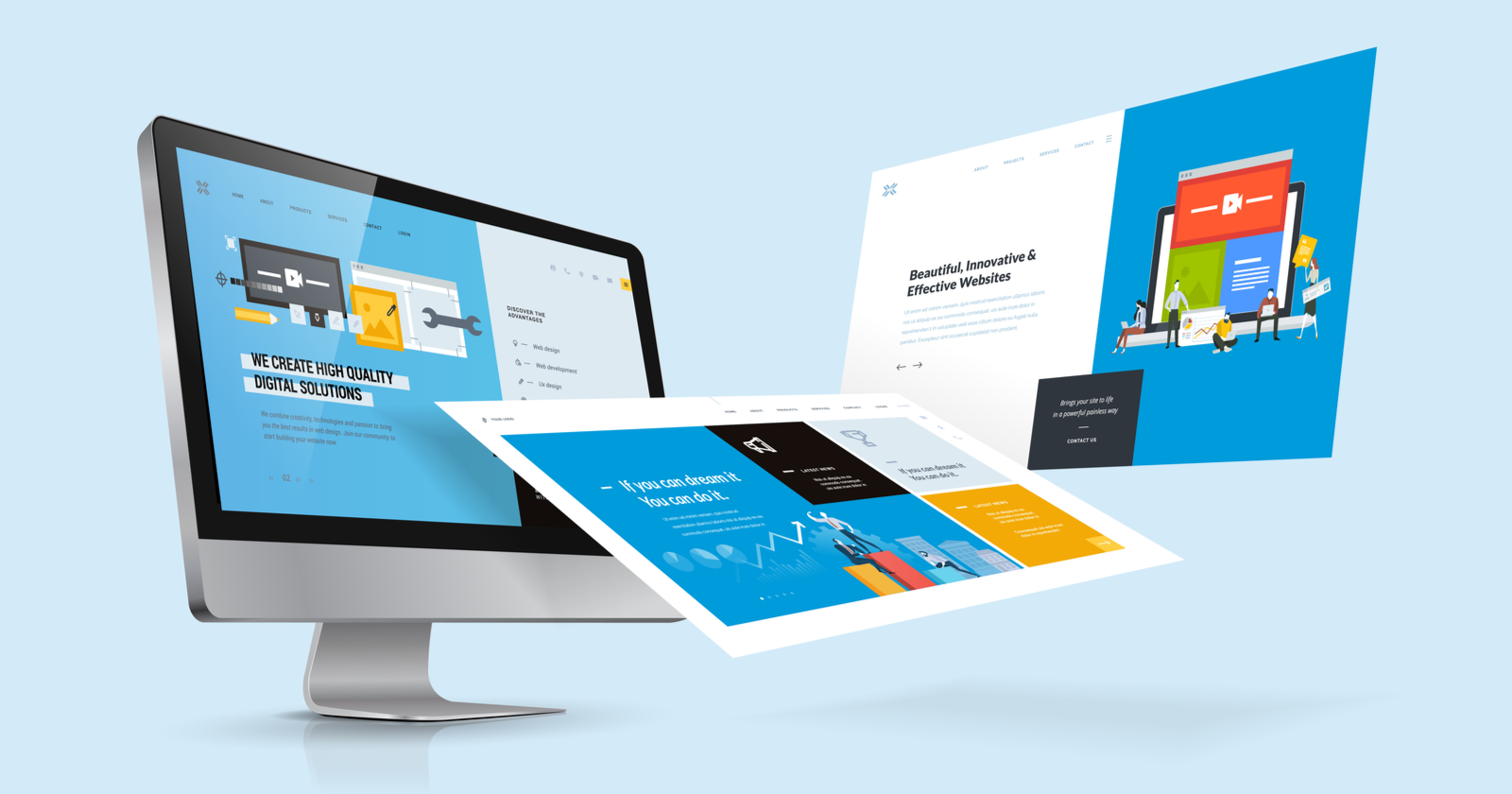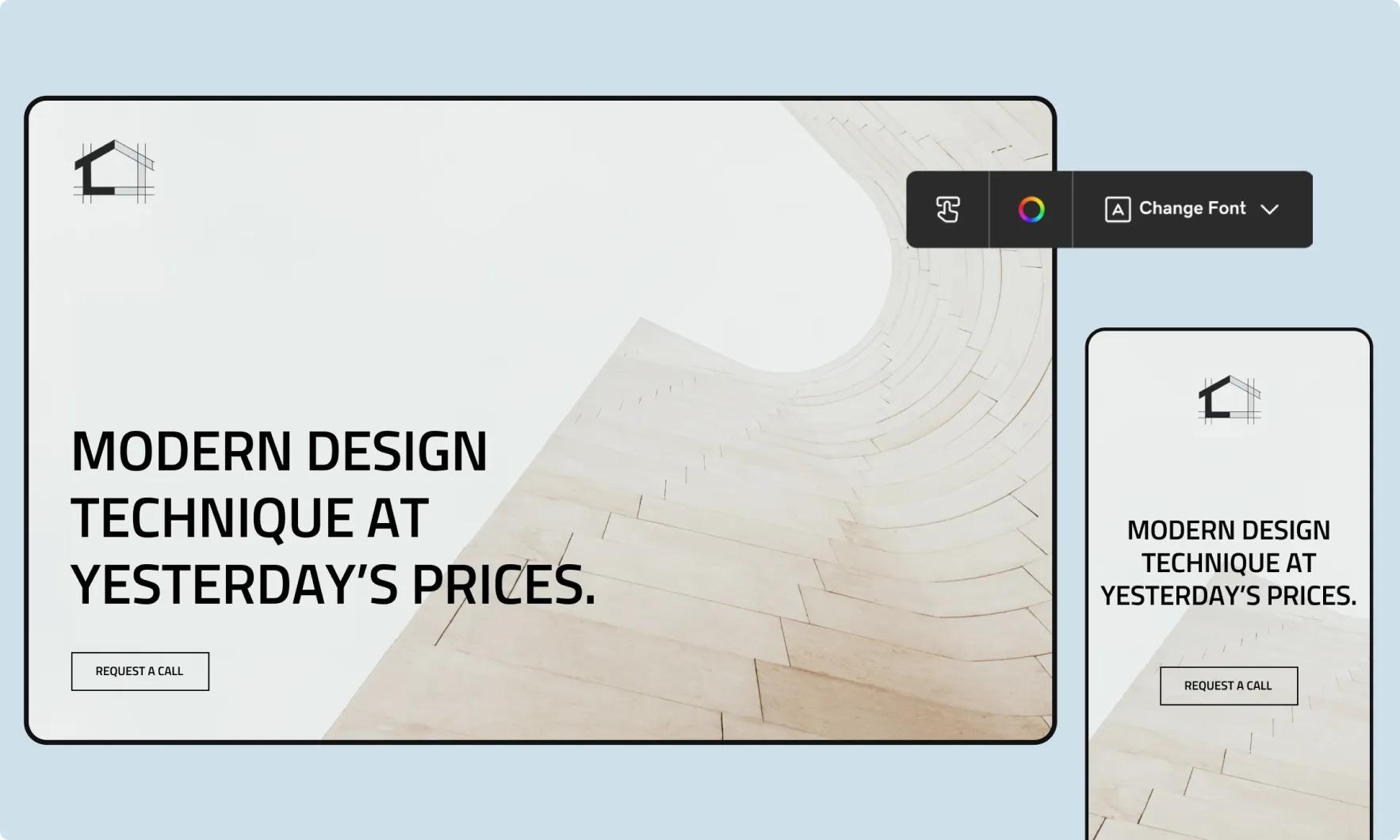Ingenious Patterns in Web Design Johannesburg for the Modern Service
Discovering the Essential Principles and Best Practices of Effective Website Design for Improved Customer Experience and Engagement

Value of User-Centered Style
User-centered style (UCD) acts as a keystone of reliable website design, highlighting the necessity of tailoring digital experiences to fulfill the demands and choices of customers. By prioritizing the individual's point of view, UCD makes sure that internet sites are not just useful yet additionally instinctive and interesting.
The relevance of UCD lies in its capacity to boost user complete satisfaction and retention. When individuals locate a site easy to browse and lined up with their assumptions, they are most likely to return and advise it to others. This method cultivates a deeper psychological connection, enabling brand names to develop count on and loyalty amongst their target market.
Additionally, UCD helps with the identification of individual discomfort points with study and screening, enabling developers to attend to these concerns proactively. By including customers in the layout procedure, whether through interviews, surveys, or use testing, developers acquire beneficial insights that notify far better decision-making.
Inevitably, the implementation of UCD not only boosts the total individual experience but additionally drives quantifiable business results. Internet sites that embrace user-centered approaches often tend to see higher conversion rates and enhanced efficiency metrics, underscoring the important duty of UCD in modern-day website design.
Trick Design Principles
Effective web style is based in key style concepts that improve functionality and visual allure, more building on the structure developed by user-centered style. These principles include uniformity, aesthetic hierarchy, and comments, which together produce an intuitive customer experience.
Consistency ensures that style elements, such as colors, typefaces, and designs, stay uniform throughout the site. This knowledge assists users browse and understand the user interface with simplicity, reinforcing brand name identification. Visual power structure, achieved through shade, size, and positioning, overviews customers' attention to one of the most important web content, making info much more easily accessible and interesting. By tactically organizing components, developers can promote quicker comprehension and decision-making.

Including these crucial style principles fosters an unified mix of capability and aesthetics, ultimately causing boosted customer complete satisfaction and interaction. By adhering to these fundamental concepts, developers can create websites that not just look appealing yet likewise offer a enjoyable and effective user experience.
Ideal Practices for Functionality
Usability is a cornerstone of effective internet design, incorporating a series of practices that improve the overall experience for customers. To accomplish optimal use, it is necessary to prioritize instinctive navigating. Clear menus and sensible pathways allow individuals to locate information swiftly, reducing irritation and boosting satisfaction.
Furthermore, using consistent style aspects, such as color pattern and typography, promotes familiarity and alleviates navigating. Individuals should not need to relearn exactly how to engage with different sections of the site. Furthermore, making certain that your site is responsive across various tools is crucial, as a raising number of customers gain access to material on mobile devices.
An additional finest practice includes including availability attributes, such as alt message for pictures and keyboard navigating alternatives, to suit customers with diverse needs. Examining use via individual feedback is very useful, as real-world insights can disclose unpredicted concerns and locations for enhancement.
Enhancing Visual Pecking Order
A well-defined aesthetic power structure is essential for leading customers via an internet site, permitting them to promptly discern the significance of different aspects on a web page. This can be accomplished with the tactical use size, contrast, shade, and spacing (web design Johannesburg). Larger elements normally draw interest first, making headings or essential phone call to activity much more prominent
Shade can likewise play a significant function in developing hierarchy; for example, using a strong shade for buttons can aid them stick out against a much more low-key background. Furthermore, comparison between message and background is essential for readability, making sure that individuals can conveniently navigate content without strain.
Whitespace, or adverse area, is one more more helpful hints important facet of aesthetic power structure. It supplies breathing space around elements, aiding to team relevant items and guiding the individual's eye from one area to another. By successfully using these style principles, internet designers can produce a seamless individual experience that improves interaction and minimizes cognitive tons.
Inevitably, an attentively created aesthetic power structure not just boosts use yet also fosters my explanation a much more user-friendly communication with the web site, leading to higher satisfaction and retention rates amongst customers.
Responsive and Adaptive Design
Visual hierarchy plays a substantial function in customer experience, and its efficiency must prolong across different gadgets and screen dimensions. Responsive style employs liquid grids, adaptable pictures, and media questions to change the design and web content dynamically, ensuring that customers take pleasure in a smooth experience regardless of the tool.
In comparison, flexible design utilizes distinct formats tailored to specific display dimensions. By spotting the customer's gadget and serving an optimized layout, flexible style can offer an extra tailored experience. Nevertheless, this frequently needs multiple versions of the very same material, which can complicate administration and increase growth time.
Both techniques have their benefits, and the choice in between them depends on project demands, target audience, and source availability. Inevitably, the goal is to develop an appealing, user-friendly interface that keeps visual hierarchy and use throughout all systems. A well-implemented responsive or adaptive layout not just enhances user experience however also encourages higher engagement and retention rates, critical for the success of any type of web task.
Final Thought
To conclude, efficient website design rests on the combination of user-centered concepts and finest techniques index that improve total experience and involvement. By focusing on functionality via user-friendly navigation, aesthetic hierarchy, and responsive designs, developers can produce systems that provide to diverse user requirements. Moreover, the incorporation of availability attributes and consistent design elements guarantees a seamless communication throughout gadgets. Stressing individual comments and visual considerations eventually cultivates satisfaction, retention, and enhanced performance in the electronic landscape.
In the rapidly advancing digital landscape, comprehending the basic concepts and ideal techniques of effective internet design is paramount for cultivating boosted individual experience and involvement - web design Johannesburg.Functionality is a cornerstone of effective web design, encompassing a variety of techniques that enhance the overall experience for customers. By effectively employing these design concepts, web designers can develop a smooth customer experience that enhances engagement and reduces cognitive load
Responsive style employs liquid grids, flexible photos, and media queries to readjust the design and content dynamically, making sure that customers take pleasure in a smooth experience no matter of the gadget. A well-implemented responsive or adaptive layout not just boosts user experience but also motivates greater interaction and retention rates, vital for the success of any type of web job.